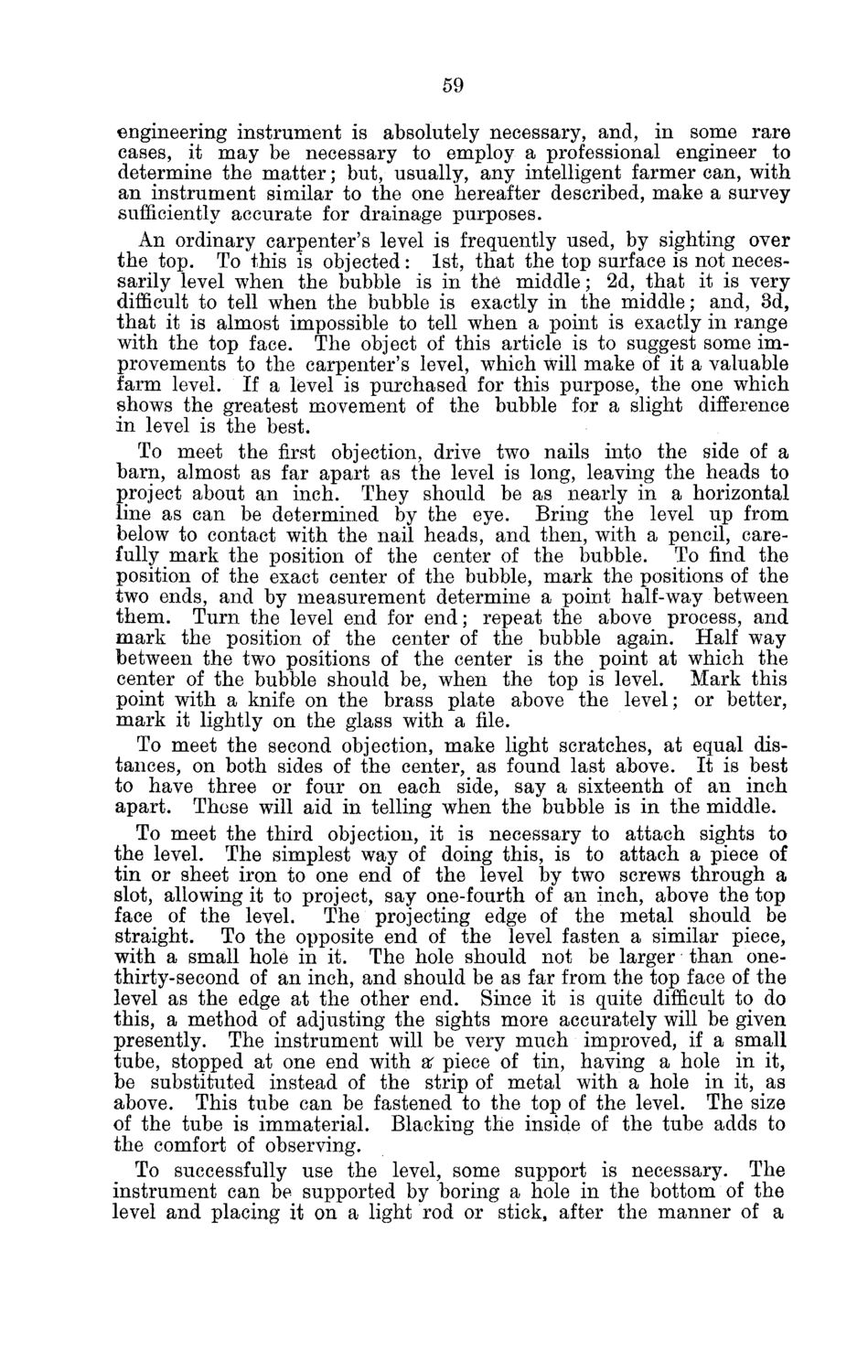| |
| |
Caption: Board of Trustees Minutes - 1880
This is a reduced-resolution page image for fast online browsing.

EXTRACTED TEXT FROM PAGE:
59 engineering instrument is absolutely necessary, and, in some rare cases, it may be necessary to employ a professional engineer to determine the matter; but, usually, any intelligent farmer can, with an instrument similar to the one hereafter described, make a survey sufficiently accurate for drainage purposes. An ordinary carpenter's level is frequently used, by sighting over the top. To this is objected: 1st, that the top surface is not necessarily level when the bubble is in the middle; 2d, that it is very difficult to tell when the bubble is exactly in the middle; and, 3d, that it is almost impossible to tell when a point is exactly in range with the top face. The object of this article is to suggest some improvements to the carpenter's level, which will make of it a valuable farm level. If a level is purchased for this purpose, the one which shows the greatest movement of the bubble for a slight difference in level is the best. To meet the first objection, drive two nails into the side of a barn, almost as far apart as the level is long, leaving the heads to project about an inch. They should be as nearly in a horizontal line as can be determined by the eye. Bring the level up from below to contact with the nail heads, and then, with a pencil, carefully mark the position of the center of the bubble. To find the position of the exact center of the bubble, mark the positions of the two ends, and by measurement determine a point half-way between them. Turn the level end for end; repeat the above process, and mark the position of the center of the bubble again. Half way between the two positions of the center is the point at which the center of the bubble should be, when the top is level. Mark this point with a knife on the brass plate above the level; or better, mark it lightly on the glass with a file. To meet the second objection, make light scratches, at equal distances, on both sides of the center, as found last above. It is best to have three or four on each side, say a sixteenth of an inch apart. Those will aid in telling when the bubble is in the middle. To meet the third objection, it is necessary to attach sights to the level. The simplest way of doing this, is to attach a piece of tin or sheet iron to one end of the level by two screws through a slot, allowing it to project, say one-fourth of an inch, above the top face of the level. The projecting edge of the metal should be straight. To the opposite end of the level fasten a similar piece, with a small hole in it. The hole should not be larger than onethirty-second of an inch, and should be as far from the top face of the level as the edge at the other end. Since it is quite difficult to do this, a method of adjusting the sights more accurately will be given presently. The instrument will be very much improved, if a small tube, stopped at one end with ar piece of tin, having a hole in it, be substituted instead of the strip of metal with a hole in it, as above. This tube can be fastened to the top of the level. The size of the tube is immaterial. Blacking the inside of the tube adds to the comfort of observing. To successfully use the level, some support is necessary. The instrument can be supported by boring a hole in the bottom of the level and placing it on a light rod or stick, after the manner of a
| |